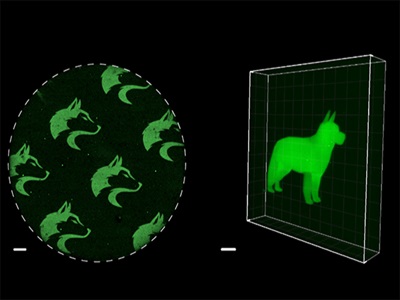Please expect some delays: Our office will be operating at a reduced capacity during the holiday season. Your order might take longer to process and fulfill during this time. Thank you for your patience.
SpyLigation: Spatiotemporal Control of Protein Function
The innovation is a method to activate protein function near-instantaneously and irreversibly in response to light, accomplished through genetically encoded triggered protein-protein ligation reactions. This method, known as light-activated SpyLigation (LASL), stably re-assembles bioactive proteins from non-functional split fragment pairs following brief exposure to light.

What is the Problem?
Protein-protein interactions are the primary mechanism of cellular regulation, directing bioprocesses including cell growth and migration and diseases such as Alzheimer’s. Since protein-protein interactions play a critical role in nearly all cellular bioprocesses, there is tremendous interest to develop techniques to specifically modulate protein activity within living systems and 4D space.
What is the Solution?
The solution is a method to activate protein function near-instantaneously and irreversibly in response to light, accomplished through genetically encoded triggered protein-protein ligation reactions. This method, known as light-activated SpyLigation (LASL), stably re-assembles bioactive proteins from non-functional split fragment pairs following brief exposure to light. Photolithographic processing techniques can be employed to specify when, where, and how much photoligation occurs.
What is the Competitive Advantage?
The competitive advantage of this technology lies in its ability to irreversibly assemble proteins and restore function in solution, in biomaterials, in living mammalian cells, and intracellularly with full spatiotemporal control. This greatly expands current optogenetic capabilities and can be utilized to probe and direct complex cellular fates in 4D. As a new tool for controlling protein function, LASL will prove useful in tissue engineering and regenerative medicine applications and help us better understand fundamental cell signaling. As the global tissue engineering market size is valued at $14.8 billion in 2022 with an expected CAGR of 14.3%, there is a significant opportunity for this technology to advance the field of tissue engineering and regenerative medicine.
Patent Information:
-
expand_more mode_edit Authors (1)Cole DeForest
-
expand_more library_books References (1)
- Ruskowitz, E.R., Munoz-Robles, B.G., Strange, A.C., Butcher C.H., Kurniawan, S., Filteau, J.R., DeForest, C.A. (2023), Spatiotemporal functional assembly of split protein pairs through a light-activated SpyLigation, Nature Chemistry, 15, 694–704
-
expand_more cloud_download Supporting documents (0)